Fountain Pen Ink pH test: Acidity of 36 inks
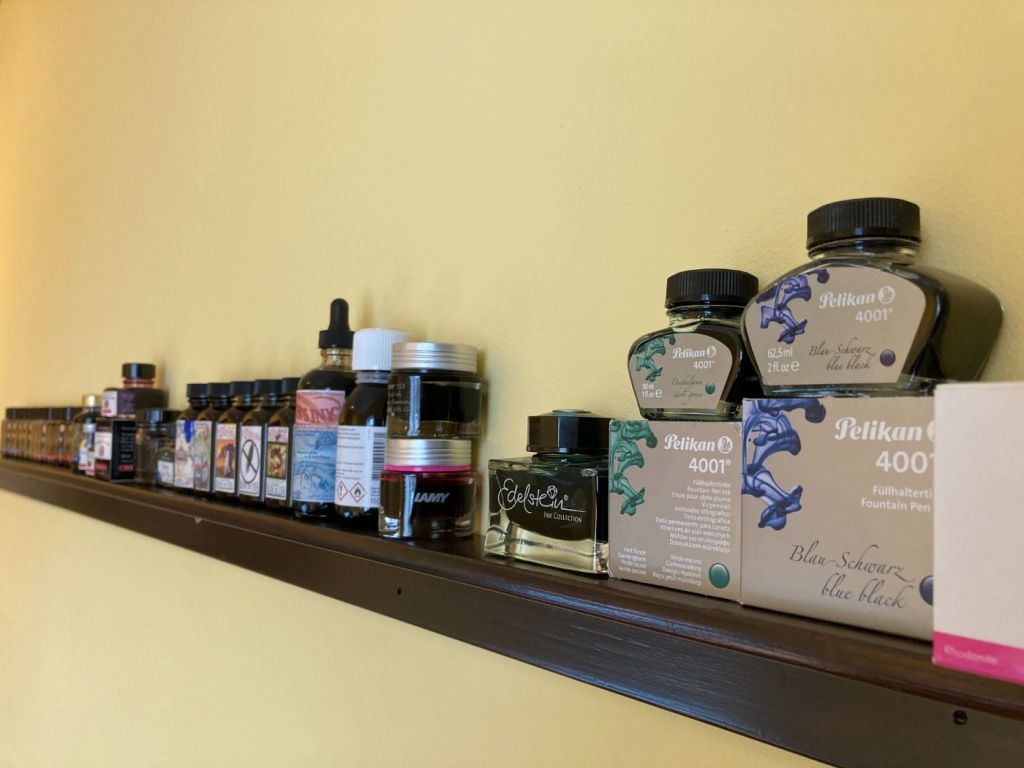
When choosing ink for your eyedropper conversion or vintage fountain pen, the acidity of the ink matters. However, most manufacturers don't show the pH value on the box.
Knowing the pH value of your inks is important when using them with piston fillers, eyedroppers, and vintage fountain pens. If you don't know, I'll explain more about why that is later on.
I've done an extensive pH test of all my inks (33) and will share the results below. I will also discuss what these results mean for pairing inks with pens for different projects. If you're looking for a particular ink, please use your browser's search function (Ctrl+F or Cmd+F) to find your ink in the table below quickly.
Fountain Pen Ink pH Test
| Brand | Name | Color | pH at 24°C |
|---|---|---|---|
| Diamine | Majestic Blue | Blue | 3.8 |
| Diamine | Blue Flame | Blue | 4.4 |
| Diamine | Chocolate Brown | Brown | 3.6 |
| Diamine | Imperial Purple | Purple | 6.5 |
| Diamine | Monboddos Hat | Purple | 5.6 |
| Diamine | Teal | Blue, Green | 6.9 |
| Diamine | Sherwood Green | Green | 5.2 |
| Diamine | Emerald | Green | 3.9 |
| Diamine | Matador | Red | 4.4 |
| Diamine | Red Dragon | Red | 2.9 |
| Diamine | Oxblood | Brown, Red | 2.9 |
| Diamine | Ochre | Brown, Orange | 6.3 |
| Diamine | Ancient Copper | Brown, Red | 6.3 |
| Diamine | Pumpkin | Orange | 6.6 |
| Diamine | Autumn Oak | Orange | 4.8 |
| Noodler's | Black | Black | 8.5 |
| Noodler's | Polar Black | Black | 8.6 |
| Noodler's | Baystate Blue | Blue | 4.0 |
| Noodler's | Black Swan in Australian Roses | Pink, Red | 7.8 |
| Noodler's | X-Feather | Black | 8.6 |
| Noodler's | Apache Sunset | Orange | 8.1 |
| Pelikan | 4001 Blue Black | Black, Blue | 2.1 |
| Pelikan | 4001 Dark Green | Green | 6.4 |
| Pelikan | Edelstein Aventurine | Green | 7.8 |
| Parker | Quink Black | Black | 3.5 |
| Herbin | Lie de Thé | Brown, Yellow | 7.9 |
| Herbin | Poussière de Lune | Purple | 8.1 |
| Herbin | Larmes de Cassis | Pink | 7.8 |
| Herbin | Éclat de Sapphire | Blue, Purple | 6.1 |
| Herbin | Blue Pervenche | Turquoise | 7.0 |
| Faber Castell | Royal Blue | Blue | 3.3 |
| Lamy | Rhodonite | Pink | 8.1 |
| Lamy | Obsidian | Black | 7.6 |
Pen Ink pH: Acidity of Different Inks
What is the pH level of pen ink?
Most pen inks are slightly acidic, while others are pH-neutral. The average pH level of pen ink is 5.8, and the median pH level is 6.3. The general range lies between 3.9 and 7.8 pH. None of the inks we tested were significantly alkaline.
Pelikan 4001 Black Blue is remarkably acidic (2.1 pH), while Herbin inks are pH-neutral average of 7.4 pH, and Noodler inks are close to pH-neutral (8.5pH).
Is pen ink alkaline or acidic?
Most fountain pen inks are pH-neutral or slightly acidic. In our test, the highest pH value was 8.6 (Noodler's Polar Black), slightly alkaline, or basic. Most regular inks, like Pelikan's 4001 Black Blue (2.1 pH) or Parker's Quink Black (3.5 pH), are more acidic than expected. In comparison, Pelikans 4001 Black Blue is as acidic as a lemon. However, I've never had any problems
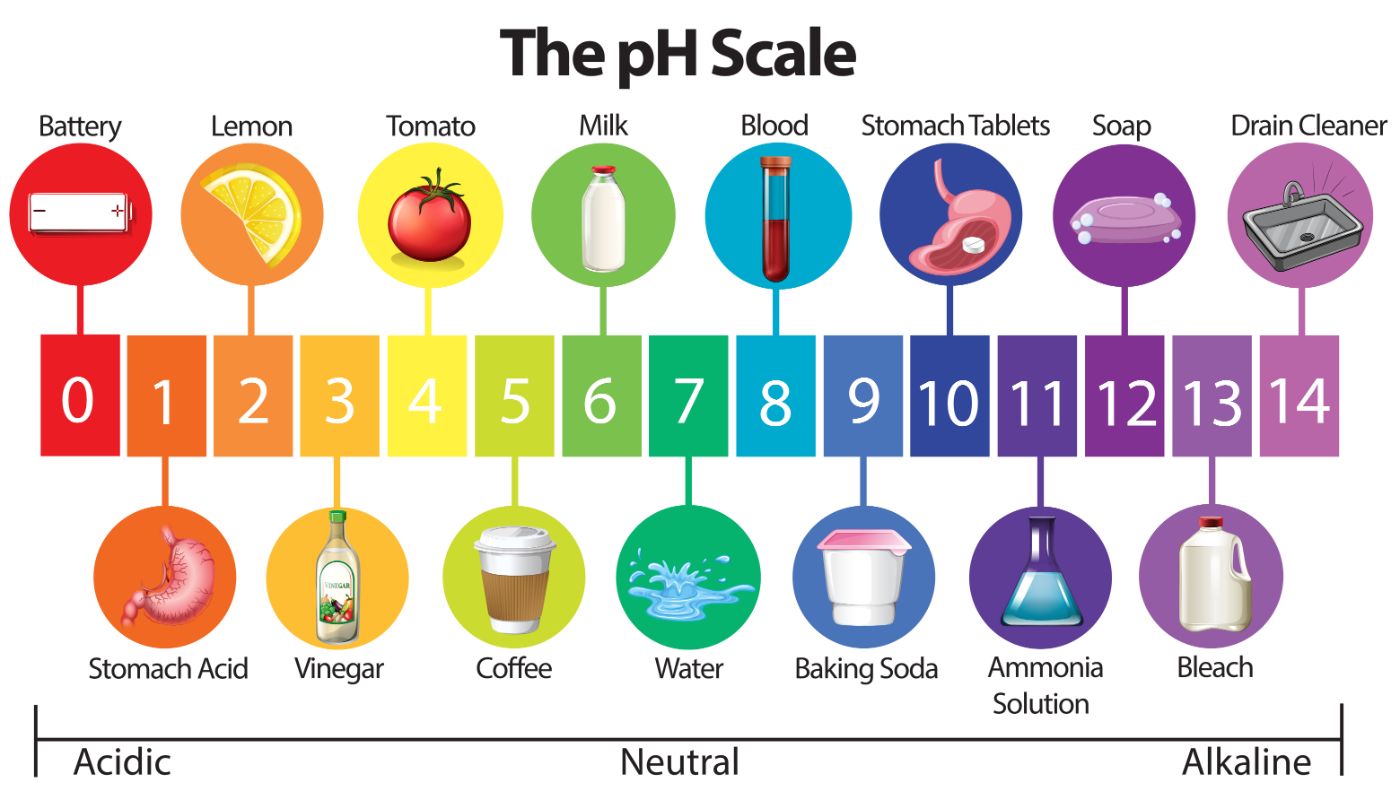
Meaning of pH values
pH stands for potenz Hydrogen ion (concentration of Hydrogen ion). pH values are on a spectrum, so the value indicates not whether an ink is acidic or not, but rather how acidic an ink is. That said, here are the ranges that I use to make sense of the data:
- Acidic: 0-5 pH
- pH-neutral: 6-8 pH
- Basic: 9-14 pH
The pH spectrum runs exponentially, which means that lemon juice with a pH of 2 is 10 times as corrosive as orange juice (pH 3), and 100 times as corrosive as a tomato (pH 4). The same goes the other way around with alkaline (or basic) substance with a high pH value (8+). For example, liquid drain cleaner is highly corrosive with a pH of 14; I wouldn't touch that stuff bare-handed.
The closer something is to pH 7, the less corrosive it will be, so that's what we're ideally looking for in our inks.
For a scientific explanation on the pH scale, I recommend reading this article on ScienceBuddies.
The most pH neutral and acidic fountain pen inks
The most pH-neutral fountain pen inks are Noodler's Black inks (8.6 pH) and Herbin ink (6.1-8.1 pH, average 7.4 pH).
Below, I've listed the safest fountain pen inks of this test, with a pH of between 6.5 and 8.6.
Fountain pen inks that are pH neutral:
| Brand | Name | Color | pH |
|---|---|---|---|
| Diamine | Imperial Purple | purple | 6.5 |
| Diamine | Pumpkin | orange | 6.6 |
| Diamine | Teal | blue / green | 6.9 |
| Herbin | Blue Pervenche | turquoise | 7 |
| Lamy | Obsidian | black | 7.6 |
| Herbin | Larmes de Cassis | pink | 7.8 |
| Noodler's | Black Swan in Australian Roses | pink/purple | 7.8 |
| Pelikan | Edelstein Aventurine | green | 7.8 |
| Herbin | Lie de Thé | brown | 7.9 |
| Herbin | Poussière de Lune | purple | 8.1 |
| Lamy | Rhodonite | pink | 8.1 |
| Noodler's | Apache Sunset | orange | 8.1 |
| Noodler's | Black | black | 8.5 |
| Noodler's | X-Feather | black | 8.6 |
| Noodler's | Polar Black | black | 8.6 |
Acidic fountain pen inks
| Brand | Name | pH value | |
|---|---|---|---|
| Pelikan | 4001 Black Blue | blue | 2.1 |
| Diamine | Oxblood | red | 2.6 |
| Diamine | Red Dragon | red | 2.9 |
| Faber Castel | Royal Blue | blue | 3.3 |
| Parker | Quink Black | black | 3.5 |
| Diamine | Chocolate brown | brown | 3.6 |
| Diamine | Majestic Blue | blue | 3.8 |
| Diamine | Emerald | green | 3.9 |
| Noodler's | Baystate Blue | blue | 4 |
| Diamine | Matador | red | 4.4 |
| Diamine | Blue Flame | blue | 4.4 |
| Diamine | Autumn Oak | orange | 4.8 |
| Diamine | Ochre | brown | 4.9 |
Method of testing
I've tested these inks with a cheap but correctly calibrated aquarium pH meter, with a range from 0.00 - 14.00 and an accuracy of ±0.1. I've cleaned the meter and test container between each test with distilled water. I took two to three readings of each ink. All samples were tested at room temperature (24°C or 75°F). I've rounded the values to one decimal point, as I have no illusions about the accuracy of my test setup and will not pretend it's more accurate than it actually is.
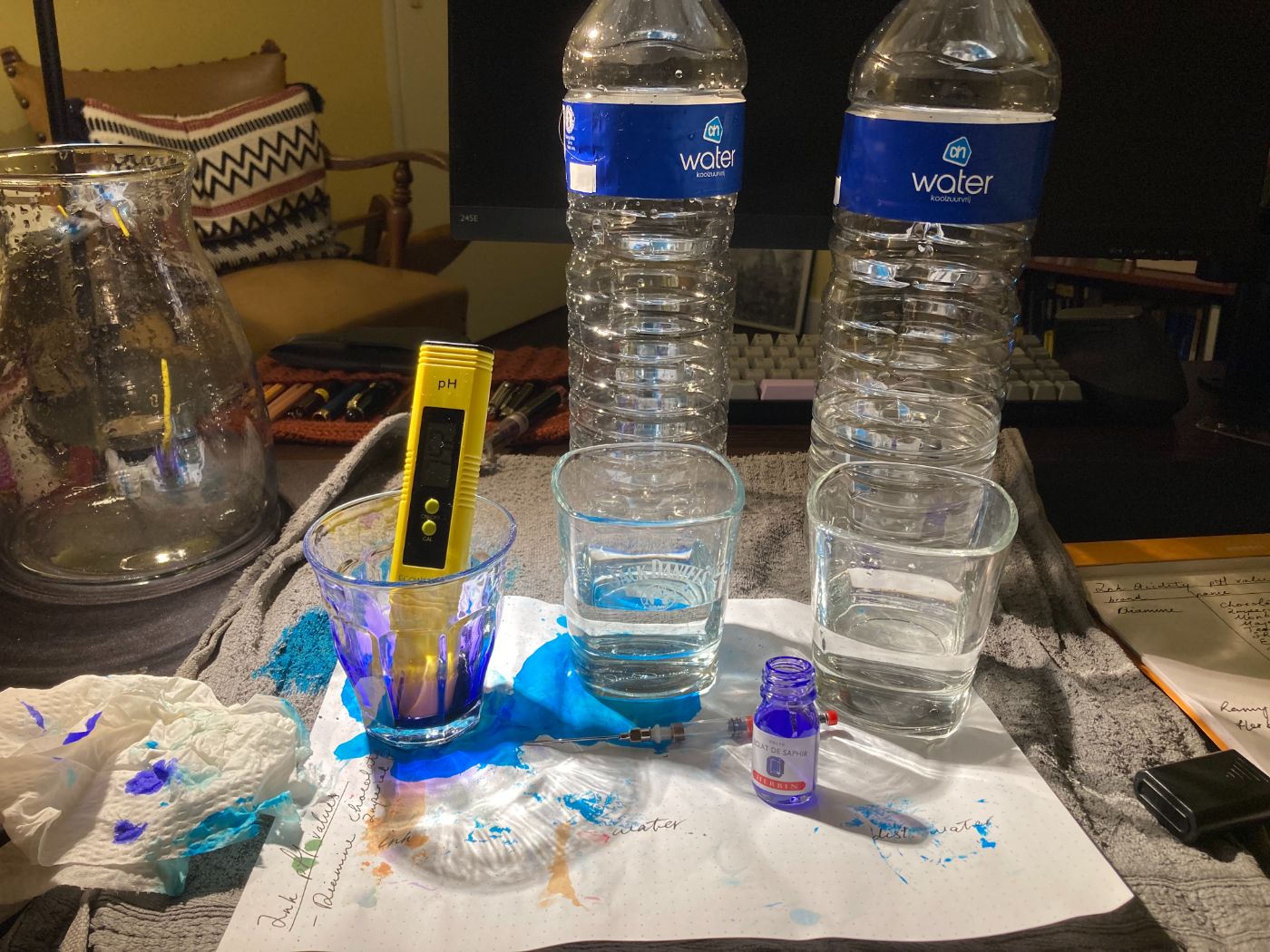
Reservations about this method:
- Most of the ink bottles were already opened and used. This will affect the pH value. Moving forward, I will try to test new bottles immediately.
- Simple and cheap equipment may result in inaccurate readings.
- Test conditions were controlled as much as possible, but this test wasn't performed in a lab.
Conclusions
My test results, for the most part, are in line with an older report at Inky Pen Dance. Seven values are within a 0.55 pH margin. Three values were different:
- Diamine Autumn Oak: 4.8 vs. 5.75 (-0.95 pH)
- Diamine Ancient Copper: 6.3 vs. 7.06 (-0.76 pH)
- Diamine Pumpkin: 6.6 vs. 7.64 (-1.04 pH)
Ink color/brand and acidity
There doesn't seem to be a correlation between colors and the acidity of the ink. There seems to be a correlation between brand and ink acidity, specifically between ink series and acidity. For example, Lamy's T53 Crystal Inks are both pH neutral. Noodler's Blacks were also pH neutral or slightly basic. Of the inks that I've tested, the brands considered safe to use in all pens are remarkably acidic.
Are Noodler's inks pH-neutral?
Noodler's says their inks are pH-neutral. I've tested six, and five out of six had a value of 8.5-8.6 pH. This is slightly basic, but not much. Baystate Blue was acidic at 4 pH.
Acidity of Herbin inks
Herbin inks measured without exception within a very safe pH range, ranging from 6.1 to 8.1, with an average of 7.4 pH. Herbin Blue Pervenche is truly pH-neutral at 7 pH. Herbin dyes their inks exclusively with natural dyes and is known to produce very safe and stable inks.
Acidity of Diamine inks
Diamine inks measured within a wide range, ranging from 2.6 to 6.9, with an average and median of 4.8 pH. The least acidic Diamine inks are:
- Teal (6.9 pH)
- Pumpkin (6.6 pH)
- Imperial Purple (6.5 pH)
- and Ancient Copper (6.3 pH)
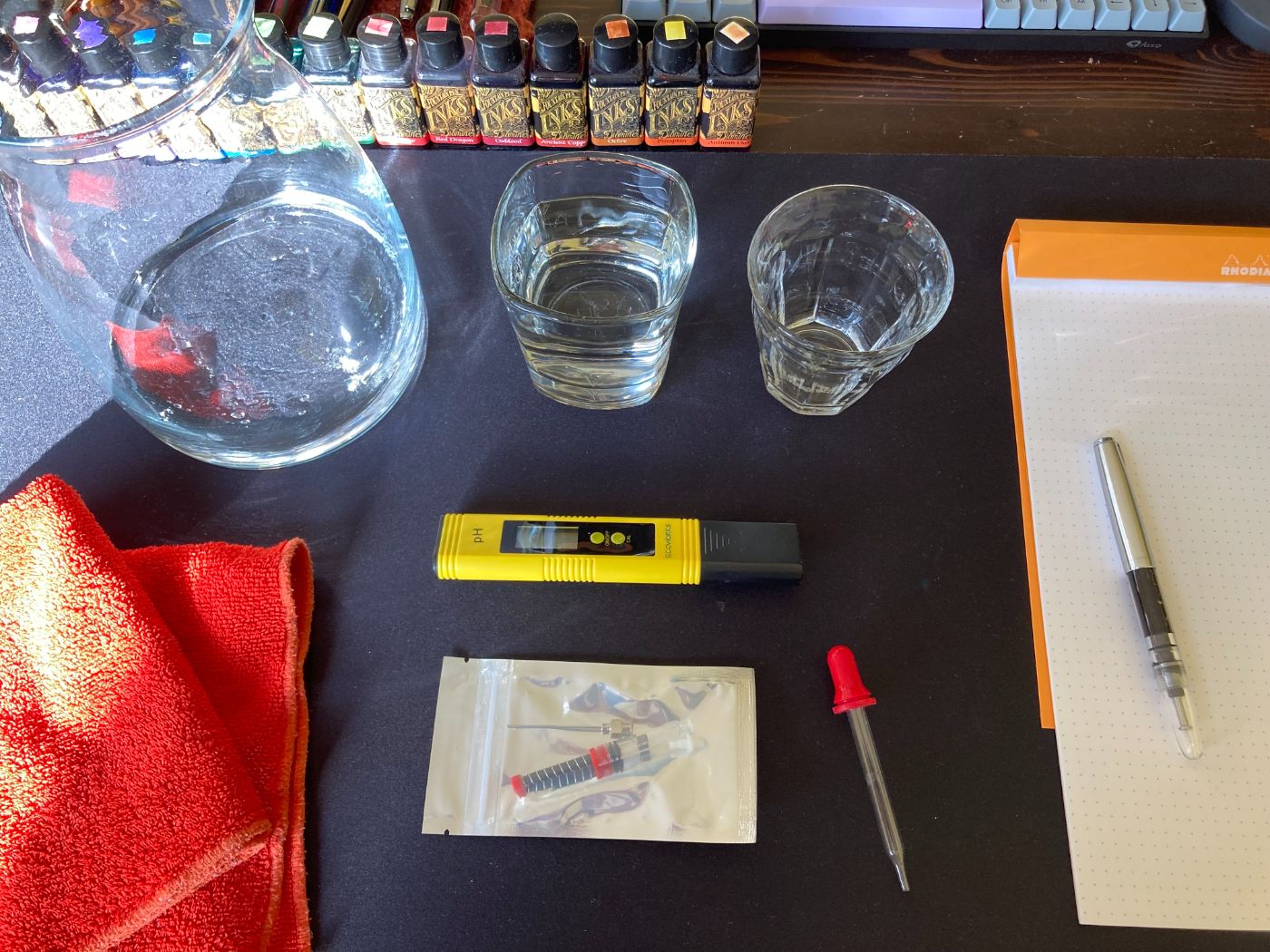
Why Does Ink Acidity Matter?
The short answer is that ink reacts with pen parts. How much and how quickly is determined by the properties of the ink and also how you use the pen.
The acidity of fountain pen inks matters especially when it comes in contact with the body material of the pen, like with a piston filler or eyedropper, or in vintage pens that use rubber sacks or other filling mechanisms.
Inks react with the materials that it comes in contact with. The more acid or base ink is, the more it will react. If you use cartridges or a converter, this may not be a point of concern. However, if you eyedropper your pens, the ink comes in contact with the pen body. The pen's material may corrode over time by the ink's acidity.
Ink acidity in vintage pens
It seems logical that less acidic inks will react less with vintage fountain pen bodies. While this might be the case, some of the most recommended inks for vintage pens are quite acidic, such as Pelikan 4001 Black Blue, Parker Quink, and Diamine. On the other hand, other (low-acidity) inks can easily stain or clog pens because of the type of dyes or pigment. This suggests that acidity plays but a part in the safety of ink, and other factors are also important.
Luckily, there are plenty of good options, and the inks to avoid are well-documented. Read more about what inks to avoid in your vintage pens.
Nathan Tardif of Noodler's ink is a strong proponent of avoiding acidic inks in (vintage) pens. He explains that dyes are not the problem, since all they do is clog up the pen at worst, but not corrode its parts. To demonstrate his point, he created a test setup of aluminum foil cones and tested several inks overnight. Acidic inks corroded the foil in one night and seeped quickly seeped through.
I'm no chemist, but this seems like a reasonable demonstration to me; it seems to rely on first principles instead of marketing, and in my opinion, illustrates his theory well. Perhaps I will recreate this setup to verify for myself.

Ink acidity in eyedropper pens or piston fillers
In eyedropper and piston fillers, the ink is in contact with large parts of the fountain pen body. Choosing an ink with low acidity will help keep any reactions to a minimum. Inks with a pH of around 7 will have the same long-term effect on your pen as filling it with water would. More acidic inks will, theoretically, react more heavily over time.
This does not mean, however, that acidic inks will certainly cause damage to a pen. Most modern plastics will hold up well over time, regardless of acidity. The acidity will play a larger role in pens made from alternative materials. Especially metal pens will react with inks. All metals will be corroded by even water over time.
Eyedropping aluminum and stainless steel pens
Some metals are better left untouched by ink, while others are possible to eyedropper. Aluminum and stainless steel are two great options when looking for a pen that will last - both in material and ink capacity. However, even stainless and aluminum may react over time. Using low-acidity ink will greatly reduce the reaction and extend the lifespan of the pen.
Brass, copper, silver, and regular metal will all react quite heavily and might corrode quickly regardless of ink acidity.
Read more on pen body materials here.
Here is an excellent article on the importance of ink pH levels in fountain pens by Nathan Tardiff, owner and master blender at Noodler's ink.
Ink acidity for mixing inks
Ink acidity also plays an important role in mixing inks. As of now, I'm unsure what the exact significance is, and I couldn't find any research online. However, it's my guess that mixing inks of similar acidity will avoid dramatic reactions. I will probably come back to this topic in the future, since it is really interesting.
Did you find the answer to your specific question?
👍 52 👎 5
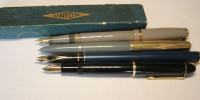
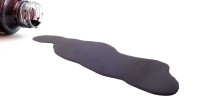
Leave a comment